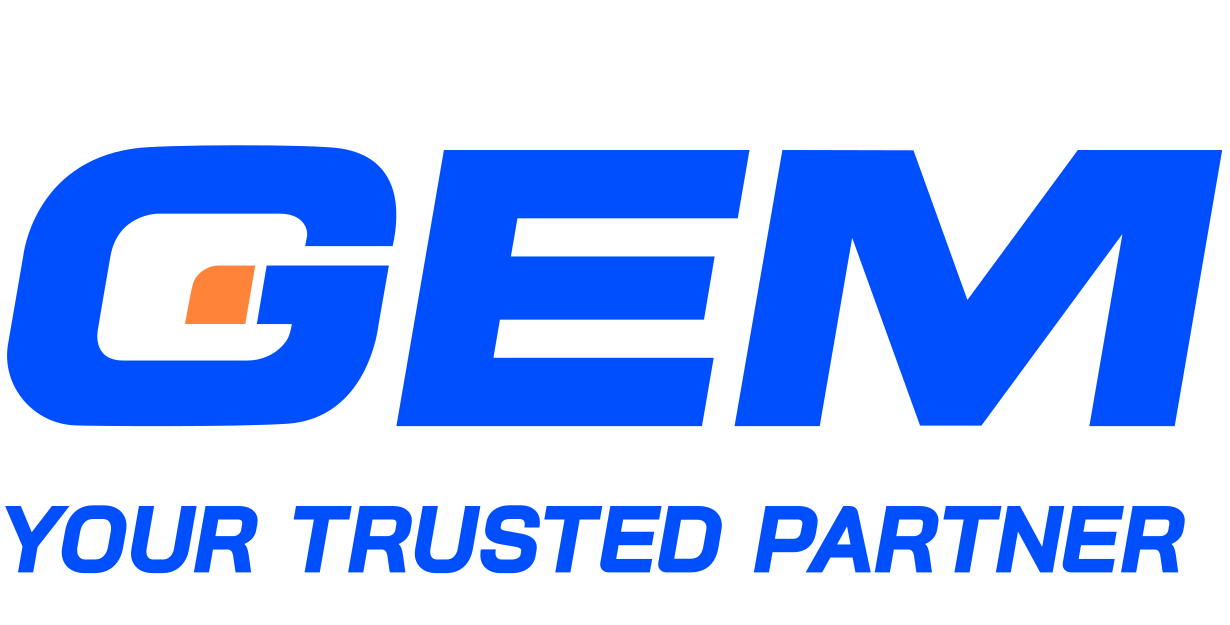Contents
- What is Customer Feedback Management?
- Why It’s Important to Manage Customer Feedback
- What You Need to Create An Efficient Customer Feedback Management System
- Customer Feedback Tools & Metrics: How to Quantify Customer Sentiment?
- Embedding Feedback into Cross-Functional Workflows
- Best Practices to Enhance Customer Support Services
- Make your digital transformationseamless and future-ready
- Building Your Customer Feedback Management with GEM Corporation
- Wrap Up
Customer feedback management has become a core function for companies aiming to stay customer-focused and data-informed. Teams are building systems to translate feedback into product updates, service changes, and business strategy. According to McKinsey & Company, advanced personalization efforts can drive a 10% to 15% increase in revenue, with top performers seeing up to 25%. This growth depends on how well organizations capture and act on customer signals. In this guide, we’ll walk through the strategies, tools, and metrics shaping effective feedback systems in 2025.
What is Customer Feedback Management?

Customer Feedback Management refers to a structured approach for gathering, interpreting, and applying customer input across the organization. It involves collecting insights from multiple channels, such as surveys, support interactions, and social platforms, and turning that information into actionable data. When shared across relevant teams, feedback helps inform decisions that shape product features, service workflows, and customer-facing processes. The goal is to close the loop between customer expectations and business execution, using insight as a continuous input into strategy and operations.
Why It’s Important to Manage Customer Feedback
Feedback systems surface signals that influence product direction and operational focus. Here’s what an effective approach unlocks:
- Signals unmet demand: Highlights pain points or feature requests that may not surface in standard market research.
- Improves product-market fit: Helps teams identify which features matter most for retention and usage.
- Informs AI training data: Creates a feedback loop that supports more accurate and relevant AI-driven interactions.
- Builds transparency and trust: When customers see their input reflected in updates, it reinforces credibility.
- Optimizes team alignment: Centralized feedback gives product, support, and marketing teams a shared view of user priorities.
What You Need to Create An Efficient Customer Feedback Management System

Building a consistent and scalable feedback management process requires more than collecting responses. It calls for a structured system, one that turns scattered signals into shared knowledge and measurable action. These are the core components:
Multi-Channel Feedback Collection
Capture input across all major customer touchpoints. This includes structured formats like CSAT surveys and NPS, as well as unstructured sources such as support tickets, app store reviews, social media comments, and AI chat transcripts. The broader the coverage, the more representative the feedback.
Categorization and Signal Extraction
Organize incoming feedback by themes, product areas, sentiment, and urgency. NLP tools can help identify trends in unstructured text, while tagging systems make it easier to group insights by customer segment or lifecycle stage.
Feedback Routing and Prioritization
Route relevant feedback to the right teams through automated workflows. Product teams may need feature requests, while support teams should see complaints or confusion points. Context, like frequency, sentiment, and customer value, helps define what gets prioritized.
Action Tracking and Resolution Management
Track changes triggered by feedback. Internal dashboards can visualize the feedback-to-resolution pipeline, showing how many items were addressed, escalated, or deferred. This improves accountability and helps surface recurring delays or disconnects.
Customer Loop Closure
Let users know when their input drove meaningful updates. Whether through release notes, targeted emails, or in-app notifications, closing the loop builds transparency and encourages continued engagement. It also signals that feedback is being treated as a core input to decision-making, not a one-off activity.
Customer Feedback Tools & Metrics: How to Quantify Customer Sentiment?

Understanding customer sentiment depends on two things – having the right tools to manage feedback and using the right metrics to interpret it. A well-designed system combines both.
Customer Feedback Tools
- Feedback management platforms: Tools like Delighted, Medallia, and Qualtrics centralize collection, tagging, and reporting.
- AI-driven analysis: LLM-powered tools can summarize long-form feedback, detect sentiment, and flag emerging patterns across channels.
- Integration hubs: Connecting tools like Jira, Salesforce, or Slack helps route feedback directly into workflows, eliminating silos.
- Customer-facing interfaces: In-app surveys, web widgets, and community forums provide frictionless ways for users to share input in real time.
Customer Feedback Metrics
- Net Promoter Score (NPS): Measures customer willingness to recommend, often used to track loyalty trends.
- Customer Satisfaction (CSAT): Captures immediate satisfaction levels after a specific interaction or touchpoint.
- Customer Effort Score (CES): Indicates how easy it is for users to complete key tasks or resolve issues.
- Goal Completion Rate (GCR): Tracks success rates for user-defined goals, such as completing a purchase or finding information.
- Sentiment trend: AI tools can quantify emotional tone across unstructured feedback, giving early signals of brand perception shifts.
- Closed-loop rate: Measures the percentage of submitted feedback that received a response or resolution.
- Insight-to-action ratio: Evaluates how many insights led to tangible changes in products, services, or processes.
Embedding Feedback into Cross-Functional Workflows

A mature feedback system distributes it to the right teams with the right context. Embedding feedback into operational workflows helps organizations act faster and align more closely with customer needs.
Product Planning with NPS Themes
Patterns in Net Promoter Score responses often reveal friction points or unmet expectations. Feeding these insights into product roadmap discussions helps prioritize updates that directly impact retention and satisfaction.
CX and Engineering Collaboration
Customer satisfaction feedback tied to bugs, delays, or usability issues should be routed to engineering with clear context. Joint triage sessions between CX and technical teams reduce resolution time and improve root-cause traceability.
Go-to-Market Messaging Aligned with Customer Voice
Feedback from sales calls, onboarding sessions, or support interactions often reveals the language customers use to describe pain points. Marketing teams can leverage this to refine positioning and campaign messaging.
Training AI Agents with Real Customer Data
AI-powered support tools improve only when trained on high-quality, relevant inputs. Using actual customer interactions, annotated by issue type or sentiment, can improve the accuracy and relevance of automated responses.
Best Practices to Enhance Customer Support Services

Customer satisfaction feedback is one of the most direct indicators of support performance. But collecting it is only part of the equation. High-performing support teams use feedback as a continuous input to refine service quality, agent workflows, and escalation paths. Here’s how:
Treat Feedback as Ongoing Infrastructure
Integrate feedback into the daily operations of support as a live signal. Support dashboards should include real-time satisfaction scores, trending complaints, and unresolved themes.
Target Feedback Requests by Behavior
Timing matters. Instead of fixed intervals, trigger feedback prompts based on user actions, like after a ticket is resolved or a new feature is used. This increases relevance and response quality.
Share Feedback Internally with Context
Monthly “Voice of Customer” reports or team briefings give visibility into what’s working and what’s not. Highlight recurring issues, resolution rates, and customer verbatims to keep teams grounded in real-world experience.
Empower Frontline Escalation
Give agents clear protocols and tools to flag recurring problems or high-impact feedback. This can include tagging systems, direct escalation workflows, or internal Slack channels monitored by product and ops.
Close the Loop Where Customers Can See It
Make it clear when feedback leads to action. Use changelogs, help center updates, or proactive emails to show users how their input influenced decisions. This builds trust and encourages future participation.
Support teams that operationalize feedback consistently outperform reactive models. A connected feedback system not only improves resolution but also shapes the entire customer experience.
Make your digital transformation
seamless and future-ready
Accelerate your business growth with zero-disruption modernization services. Maximize the value of your current infrastructure, streamline processes, and cut expenses.
Building Your Customer Feedback Management with GEM Corporation

GEM Corporation is a global IT consulting and development company with a track record of delivering scalable digital solutions across industries. With over a decade of experience, GEM combines deep technical expertise with strategic execution to support data-informed decision-making. Our teams work closely with enterprises in Asia, the EU, and the US to build systems that turn customer insights into business action.
In customer feedback management, GEM supports clients in designing integrated systems that capture, route, and analyze feedback in real time. We leverage AI, including NLP, sentiment analysis, and predictive models, to extract actionable signals from unstructured feedback sources like chat transcripts and support tickets. Our data engineering teams streamline feedback pipelines, integrating them into CRMs, product analytics platforms, and internal dashboards. Whether you’re expanding survey coverage or building a full-scale feedback loop, GEM delivers the technical foundation and domain expertise to operationalize voice-of-customer programs across teams.
Wrap Up
Customer Feedback Management gives teams a structured way to capture and apply customer input across the business. It supports product planning, aligns operations, and informs how companies train AI systems and shape messaging. When paired with the right tools and workflows, a feedback system becomes part of daily execution, not just a reporting layer. To learn how GEM builds these systems for long-term impact, contact us directly.






